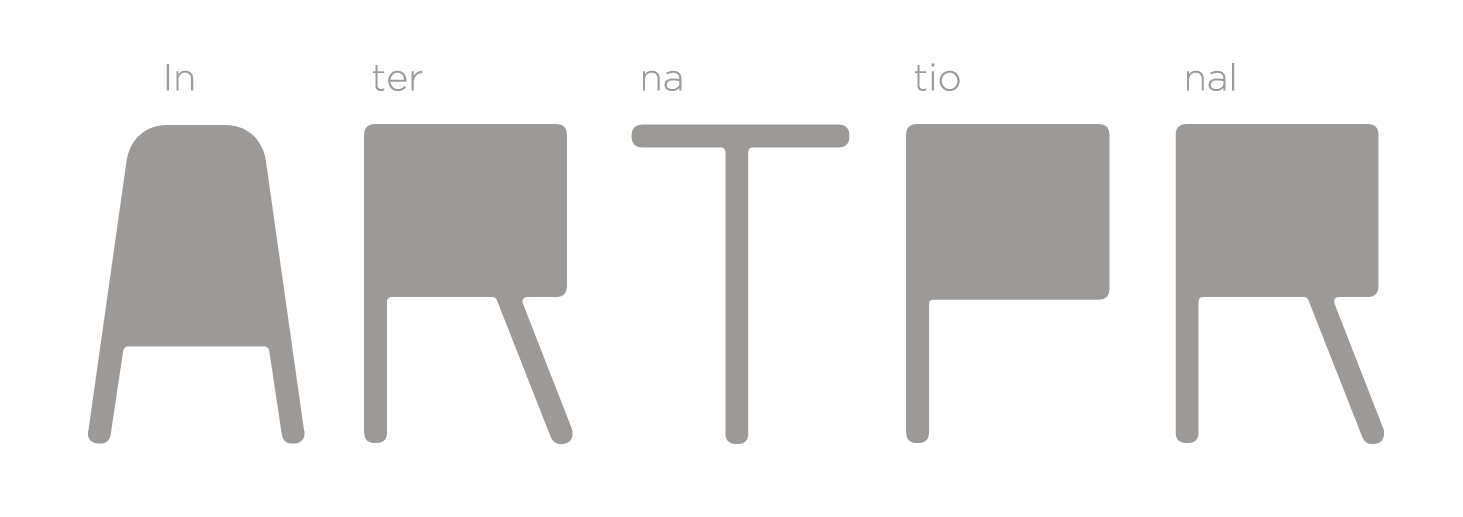New Art of a New State. Heritage Gallery, Moscow
The exhibition focuses on the two decades immediately after the Russian Revolution and questions what the October Revolution meant for the arts in Russia. Was it a complete catastrophe or, alternatively, was it the spark that ignited the phenomenon of a new art for a new state?
The exhibition highlights two contrasting, yet closely linked, schools of artistic thought from the post-revolutionary period. It presents the Russian avant-garde and the rise of agitprop as two conflicting ideological forces in one cultural epoch. The display explores the complex relationship that pushed and pulled these two philosophies together and apart. That conflict can be seen in the suprematist and cubist art of Nadezhda Udaltsova, Varvara Stepanova, Alexander Rodchenko, Alexander Drevin, Aristarkh Lentulov, and David Shterenberg. It also appears in the way these ideas found their way into the public domain in the sketches of designs for public spaces and city streets created by Yury Annenkov, Lentulov and Pyotr Shadrikov, and in the experimental photography of Rodchenko and Georgi Petrusov. It’s visible again in the unique agitprop works of the 1920s from leading figures in several different fields – the lacquer-work of the great Palekh artists, rare propaganda posters, bone carving, textiles from sketches by Stepanova, and valuable agitprop china and pottery, including work by Sergei Chekhonin.
For the avant-garde movement, design was a systematic process defined, first and foremost, by its conceptual view of everyday life and the surrounding environment. Designers and architects took on an idealistic approach to creating so-called “models of the desired future”. These can be seen in this exhibition in the rare examples of the 1920s furniture designed by Boris Iofan for Moscow’s “House on the Embankment”, and in “Voroshilov’s Corner”, a memorial office dedicated to the People’s Commission for the Defence of the USSR. Other exhibits include Soviet art deco work from the Ivanovo International Orphanage for Spanish Children and furniture that Alexander Dmitriev and Moisei Ginzburg designed for the Lenoblono children’s military labour camp. All of these are rare, one-off samples that were built to the highest level of design and craftsmanship to set the standard for future, mass-produced items. Their expectations never came true, but unlike most of the theoretical experiments of the avant-garde, these ideas were brought to life as the revolution made its impact felt in the art world.
Furniture can be seen as architecture in miniature, and this exhibition also places it in the context of the work of the leading architects of the age, such as Alexei Shchusev, Ivan Fomin, Karo Alabyan, Dmitry Chechulin, Vladimir Shchuko, Vladimir Gelfreich, and others.
A further section of the exhibition looks at the post-revolutionary period in Russia’s theatres, drawing on the works of masters such as Alexander Vesnin, Vladimir Stenberg, and Fyodor Fyodorovsky. The centrepiece of this display is a curtain designed by Fyodorovsky in 1937 for the Bolshoi Theatre.
The exhibition highlights two contrasting, yet closely linked, schools of artistic thought from the post-revolutionary period. It presents the Russian avant-garde and the rise of agitprop as two conflicting ideological forces in one cultural epoch. The display explores the complex relationship that pushed and pulled these two philosophies together and apart. That conflict can be seen in the suprematist and cubist art of Nadezhda Udaltsova, Varvara Stepanova, Alexander Rodchenko, Alexander Drevin, Aristarkh Lentulov, and David Shterenberg. It also appears in the way these ideas found their way into the public domain in the sketches of designs for public spaces and city streets created by Yury Annenkov, Lentulov and Pyotr Shadrikov, and in the experimental photography of Rodchenko and Georgi Petrusov. It’s visible again in the unique agitprop works of the 1920s from leading figures in several different fields – the lacquer-work of the great Palekh artists, rare propaganda posters, bone carving, textiles from sketches by Stepanova, and valuable agitprop china and pottery, including work by Sergei Chekhonin.
For the avant-garde movement, design was a systematic process defined, first and foremost, by its conceptual view of everyday life and the surrounding environment. Designers and architects took on an idealistic approach to creating so-called “models of the desired future”. These can be seen in this exhibition in the rare examples of the 1920s furniture designed by Boris Iofan for Moscow’s “House on the Embankment”, and in “Voroshilov’s Corner”, a memorial office dedicated to the People’s Commission for the Defence of the USSR. Other exhibits include Soviet art deco work from the Ivanovo International Orphanage for Spanish Children and furniture that Alexander Dmitriev and Moisei Ginzburg designed for the Lenoblono children’s military labour camp. All of these are rare, one-off samples that were built to the highest level of design and craftsmanship to set the standard for future, mass-produced items. Their expectations never came true, but unlike most of the theoretical experiments of the avant-garde, these ideas were brought to life as the revolution made its impact felt in the art world.
Furniture can be seen as architecture in miniature, and this exhibition also places it in the context of the work of the leading architects of the age, such as Alexei Shchusev, Ivan Fomin, Karo Alabyan, Dmitry Chechulin, Vladimir Shchuko, Vladimir Gelfreich, and others.
A further section of the exhibition looks at the post-revolutionary period in Russia’s theatres, drawing on the works of masters such as Alexander Vesnin, Vladimir Stenberg, and Fyodor Fyodorovsky. The centrepiece of this display is a curtain designed by Fyodorovsky in 1937 for the Bolshoi Theatre.
New Art of a New State. Heritage Gallery, Moscow
The exhibition focuses on the two decades immediately after the Russian Revolution and questions what the October Revolution meant for the arts in Russia. Was it a complete catastrophe or, alternatively, was it the spark that ignited the phenomenon of a new art for a new state?
The exhibition highlights two contrasting, yet closely linked, schools of artistic thought from the post-revolutionary period. It presents the Russian avant-garde and the rise of agitprop as two conflicting ideological forces in one cultural epoch. The display explores the complex relationship that pushed and pulled these two philosophies together and apart. That conflict can be seen in the suprematist and cubist art of Nadezhda Udaltsova, Varvara Stepanova, Alexander Rodchenko, Alexander Drevin, Aristarkh Lentulov, and David Shterenberg. It also appears in the way these ideas found their way into the public domain in the sketches of designs for public spaces and city streets created by Yury Annenkov, Lentulov and Pyotr Shadrikov, and in the experimental photography of Rodchenko and Georgi Petrusov. It’s visible again in the unique agitprop works of the 1920s from leading figures in several different fields – the lacquer-work of the great Palekh artists, rare propaganda posters, bone carving, textiles from sketches by Stepanova, and valuable agitprop china and pottery, including work by Sergei Chekhonin.
For the avant-garde movement, design was a systematic process defined, first and foremost, by its conceptual view of everyday life and the surrounding environment. Designers and architects took on an idealistic approach to creating so-called “models of the desired future”. These can be seen in this exhibition in the rare examples of the 1920s furniture designed by Boris Iofan for Moscow’s “House on the Embankment”, and in “Voroshilov’s Corner”, a memorial office dedicated to the People’s Commission for the Defence of the USSR. Other exhibits include Soviet art deco work from the Ivanovo International Orphanage for Spanish Children and furniture that Alexander Dmitriev and Moisei Ginzburg designed for the Lenoblono children’s military labour camp. All of these are rare, one-off samples that were built to the highest level of design and craftsmanship to set the standard for future, mass-produced items. Their expectations never came true, but unlike most of the theoretical experiments of the avant-garde, these ideas were brought to life as the revolution made its impact felt in the art world.
Furniture can be seen as architecture in miniature, and this exhibition also places it in the context of the work of the leading architects of the age, such as Alexei Shchusev, Ivan Fomin, Karo Alabyan, Dmitry Chechulin, Vladimir Shchuko, Vladimir Gelfreich, and others.
A further section of the exhibition looks at the post-revolutionary period in Russia’s theatres, drawing on the works of masters such as Alexander Vesnin, Vladimir Stenberg, and Fyodor Fyodorovsky. The centrepiece of this display is a curtain designed by Fyodorovsky in 1937 for the Bolshoi Theatre.
The exhibition highlights two contrasting, yet closely linked, schools of artistic thought from the post-revolutionary period. It presents the Russian avant-garde and the rise of agitprop as two conflicting ideological forces in one cultural epoch. The display explores the complex relationship that pushed and pulled these two philosophies together and apart. That conflict can be seen in the suprematist and cubist art of Nadezhda Udaltsova, Varvara Stepanova, Alexander Rodchenko, Alexander Drevin, Aristarkh Lentulov, and David Shterenberg. It also appears in the way these ideas found their way into the public domain in the sketches of designs for public spaces and city streets created by Yury Annenkov, Lentulov and Pyotr Shadrikov, and in the experimental photography of Rodchenko and Georgi Petrusov. It’s visible again in the unique agitprop works of the 1920s from leading figures in several different fields – the lacquer-work of the great Palekh artists, rare propaganda posters, bone carving, textiles from sketches by Stepanova, and valuable agitprop china and pottery, including work by Sergei Chekhonin.
For the avant-garde movement, design was a systematic process defined, first and foremost, by its conceptual view of everyday life and the surrounding environment. Designers and architects took on an idealistic approach to creating so-called “models of the desired future”. These can be seen in this exhibition in the rare examples of the 1920s furniture designed by Boris Iofan for Moscow’s “House on the Embankment”, and in “Voroshilov’s Corner”, a memorial office dedicated to the People’s Commission for the Defence of the USSR. Other exhibits include Soviet art deco work from the Ivanovo International Orphanage for Spanish Children and furniture that Alexander Dmitriev and Moisei Ginzburg designed for the Lenoblono children’s military labour camp. All of these are rare, one-off samples that were built to the highest level of design and craftsmanship to set the standard for future, mass-produced items. Their expectations never came true, but unlike most of the theoretical experiments of the avant-garde, these ideas were brought to life as the revolution made its impact felt in the art world.
Furniture can be seen as architecture in miniature, and this exhibition also places it in the context of the work of the leading architects of the age, such as Alexei Shchusev, Ivan Fomin, Karo Alabyan, Dmitry Chechulin, Vladimir Shchuko, Vladimir Gelfreich, and others.
A further section of the exhibition looks at the post-revolutionary period in Russia’s theatres, drawing on the works of masters such as Alexander Vesnin, Vladimir Stenberg, and Fyodor Fyodorovsky. The centrepiece of this display is a curtain designed by Fyodorovsky in 1937 for the Bolshoi Theatre.



